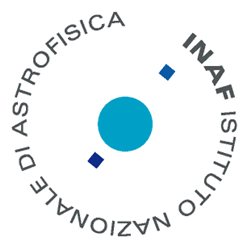(Since April 14, 2022)
 The Large Binocular Telescope (LBT) is one of the world's most advanced optical and near infrared telescope. It is located atop Mount Graham at an altitude of 3,221 m, in the Pinaleno Mountains of southeastern Arizona, United States. The telescope has a unique optical configuration made of two mirrors of 8.4m diameter mounted on a binocular mount. It is designed to implement adaptive optics technology for its instrumentation and is capable of delivering data with spatial resolution equivalent to a 22m wide telescope when it is operated in interferometric mode.
LBT is a private telescope operated by an international consortium, The Large Binocular Telescope Consortium (LBTC), of which Italy, through INAF, holds a 25% stake. The other 25% partners are a consortium of German research institutes (LBTB: LBT Beteiligungsgesellschaft) and two US universities: Universities from Arizona (UA) and Ohio State University (OSU). Other US universities (Indiana, Minnesota and Virginia) are associated to LBT through OSU. Each partner has a representative member in LBTC. A Board of Directors (BoD) governs both the life of the Corporation and the Observatory. Two advisory Committees assist the BoD: the Scientific Advisory Committee (SAC) and the Finance Committee (FC). Click here to see all the governance members and their duties.
The Large Binocular Telescope (LBT) is one of the world's most advanced optical and near infrared telescope. It is located atop Mount Graham at an altitude of 3,221 m, in the Pinaleno Mountains of southeastern Arizona, United States. The telescope has a unique optical configuration made of two mirrors of 8.4m diameter mounted on a binocular mount. It is designed to implement adaptive optics technology for its instrumentation and is capable of delivering data with spatial resolution equivalent to a 22m wide telescope when it is operated in interferometric mode.
LBT is a private telescope operated by an international consortium, The Large Binocular Telescope Consortium (LBTC), of which Italy, through INAF, holds a 25% stake. The other 25% partners are a consortium of German research institutes (LBTB: LBT Beteiligungsgesellschaft) and two US universities: Universities from Arizona (UA) and Ohio State University (OSU). Other US universities (Indiana, Minnesota and Virginia) are associated to LBT through OSU. Each partner has a representative member in LBTC. A Board of Directors (BoD) governs both the life of the Corporation and the Observatory. Two advisory Committees assist the BoD: the Scientific Advisory Committee (SAC) and the Finance Committee (FC). Click here to see all the governance members and their duties.
LBT-ITALIA
We are a team of INAF researchers with the goal to manage the Italian observing time at LBT and maximize the scientific return of the Italian community. We support the PIs during the whole lifecycle of their observing programs, from the Call for Proposal to the distribution of the science-ready products. We deal with scheduling and performing observations, processing imaging raw data and providing tools and assistance for spectroscopic data reduction. Reduced data are collected into a centralized archive: the LBT reduced Science data Center (LSC).
Proposal submission and evaluation
Every year, starting from April to mid May, PIs can apply the annual call and their (anonymous) proposals are evaluated on a scientific basis both by a group of external referees and by the Allocation Committee (TAC) that rank them accordingly. In case of sudden or unexpected astronomical events, PIs can also apply for a Director Discretionary Time (DDT) at any time during the year (see here for further details).
Observing Service
Our observers will schedule and exploit the observations with "facility instruments" (LBC, MODS, LUCI) in order to follow as strictly as possible the scientific ranking established by the INAF TAC and respecting the observational constraints requested by the applicants. "PI Instruments" (LBTI, PEPSI) will be operated by the instrument team during dedicated observing runs that are outside the regular INAF scheduling.
Data Reduction Service
Imaging raw data are mirrored from the IA2 archive to the LSC archive and then can be processed by the data reduction group at the INAF Observatory in Rome. PIs are encouraged to make use of our data reduction service. All processed data with their metadata are stored into the LSC Archive and made available to the PIs through the LSC portal. For spectroscopic data, PIs are encouraged to use the LUCI&MODS spectroscopic reduction pipeline released by the IASF-Milano and available here. An help desk will be available to fully support PIs during her/his own reductions with this pipeline.




